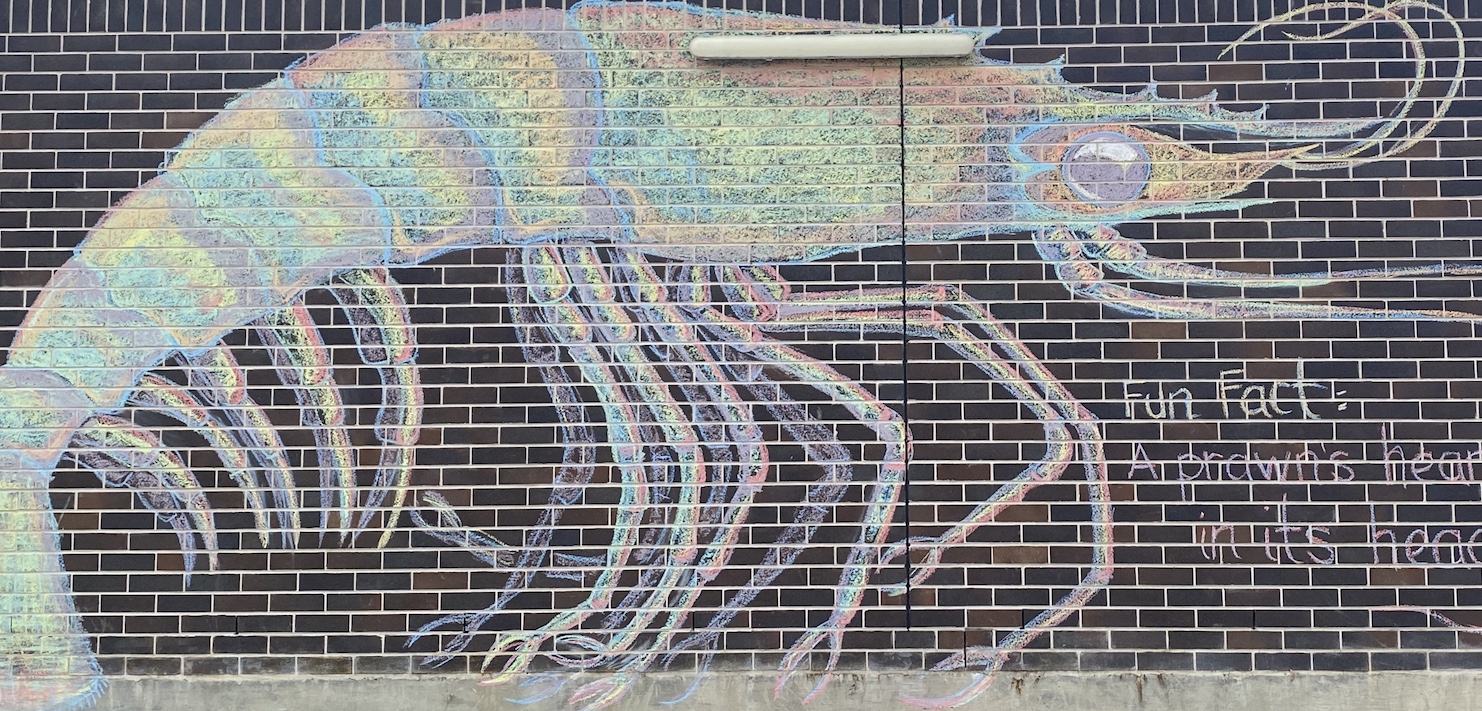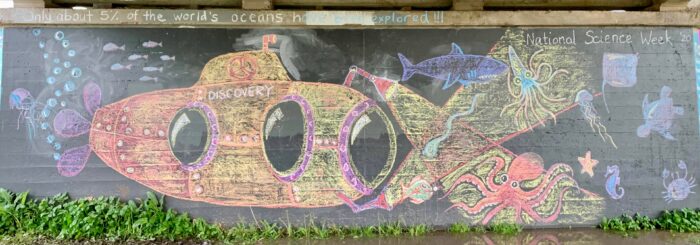
National Science Week 2020 with UNE Discovery
UNE Discovery is at it again and inspiring curiosity across the town!
Science is collaborative. Science is engaging. And most importantly, Science is surprising!
This week is National Science Week and the legends at UNE Discovery have teamed up with the New England North West Regional Science Hub and some creative locals to get you thinking outside the box and make learning incredible scientific facts all the more digestible and entertaining!
This year’s theme this year is Deep Blue, getting us thinking about innovations for the future of our oceans – this is a big deal people! And, really worth thinking about how you use and perceive the huge expanse of ocean on our planet.
This week there is an opportunity for you to explore and discover more with the help from the team at UNE Discovery, they’re collaborating with local street artist Lou Streeting to create chalk artworks in Armidale and around UNE, so keep your eyes peeled for fun facts and artworks!
We were lucky to catch a few moments of Lou’s time to talk about this collaboration!
Can you tell us a little about your job?
I work at UNE as a laboratory technician in Biology and Zoology. Part of my role is creating scientific illustrations for research publications and teaching resources.
Why did you choose to get involved in this UNE Discovery project?
This was an interesting challenge for me. A lot of my scientific illustrations are of tiny creatures and are often done looking down a microscope. So, I was super excited about the prospect of trying out some large scale drawings! I also love being involved in any educational outreach for kids.
Where and what did you study?
I studied at UNE and I did a Bachelor of Science with a focus on zoology. I am currently a PhD student at UNE and I’m researching an endangered freshwater turtle species. This research project has been an absolutely incredible experience, not only because I have been able to hatch and rear hundreds of baby turtles for release into the wild, but because my research is actually looking at hands-on ways to help save this endangered turtle.
What does STEAM mean to you?
Science education and outreach are extremely important (Science, technology, engineering, and math). Using the real world in learning experiences and getting kids to think about the world around them is invaluable. Witnessing their curiosity and amazement as they learn is so rewarding. I have been able to involve local school kids in hatchling turtle release days and the enthusiasm and ownership that they get from this experience make it so worthwhile.
Tell us a little about the artworks you’ve created for this project?
I drew 3 artworks for this project. A giant prawn, a submarine, and a blue whale.

All of the artworks were great fun and had their own challenges. The prawn was so big that we needed to use ladders and scaffolding, the submarine was under a bridge and we were working in ankle-deep water (lucky we brought gumboots!), and the blue whale was just sooo big (but not nearly as big as a real blue whale of course!).
It was such an enjoyable project because my family and friends came along and helped out. My favourite picture is probably the submarine because it was just fun and is the type of picture I draw for my daughter and little nieces and nephews.

This year, National Science week is all about the ocean. Our oceans contain such a diverse array of amazing creatures and only about 5% of our oceans have been explored! My message is… Go out and look around, explore nature! There are so many amazing things to learn and discover!
What are you hoping people feel and take away from these artworks?
I hope that people have fun finding and viewing the artworks and that they remember the interesting facts that go with them.
A few facts you might see around town:
- A prawn’s heart is in its head
- The call of a blue whale is the loudest sound made by any animal on the planet
- 70% of the earth surface is covered by oceans
- About 70% of the oxygen we breathe is produced by the ocean
- Most of the world’s artifacts are in the ocean
- Warmer temperatures result in more female sea turtles hatching
- Only about 5% of our world’s oceans have been explored
- Sea snakes do not have gills and have to surface to breathe air into their lung, which can extend the entire length of their body
- There is a 1.6 million km2 patch of garbage floating in the Pacific Ocean
- Shark’s skeletons are made from cartilage, not bone
- The ocean is home to 95% of all life on earth.
- The longest mountain range in the world is found underwater and is nearly 65,000km long
- The ocean is home to the world’s largest living structure – the Great Barrier Reef
- Octopus have three hearts and blue blood
- Hanging fish & jellyfish – these are paper lanterns (approx. 30cm long)
- Jellyfish are 95% water
Lou, thank you so much for sharing this with us – we’re so excited to see more of the artworks unfold this week!
Join UNE Discovery as they explore our earth’s oceans and discover the #scienceofthesea! ![]()


